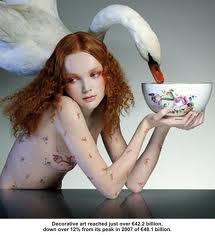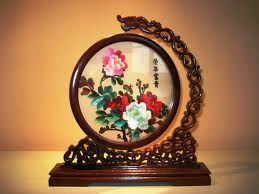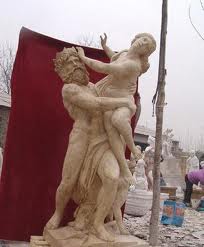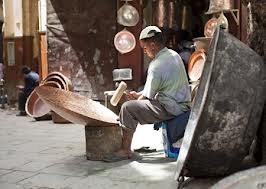Crafts – Textiles
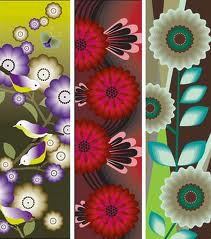
[ Source Info:
http://en.wikisource.org/wiki/Arts_and_Crafts_Essays/Textiles ]
TEXTILES
By William Morris
There are several ways of ornamenting a woven cloth: (1) real tapestry, (2) carpet-weaving, (3) mechanical weaving, (4) printing or painting, and (5) embroidery. There has been no improvement (indeed, as to the main processes, no change) in the manufacture of the wares in all these branches since the fourteenth century, as far as the wares themselves are concerned; whatever improvements have been introduced have been purely commercial, and have had to do merely with reducing the cost of production; nay, more, the commercial improvements have on the whole been decidedly injurious to the quality of the wares themselves.
The noblest of the weaving arts is Tapestry, in which there is nothing mechanical: it may be looked upon as a mosaic of pieces of colour made up of dyed threads, and is capable of producing wall ornament of any degree of elaboration within the proper limits of duly considered decorative work.
As in all wall-decoration, the first thing to be considered in the designing of Tapestry is the force, purity, and elegance of the silhouette of the objects represented, and nothing vague or indeterminate is admissible. But special excellences can be expected from it. Depth of tone, richness of colour, and exquisite gradation of tints are easily to be obtained in Tapestry; and it also demands that crispness and abundance of beautiful detail which was the especial characteristic of fully developed Mediæval Art. The style of even the best period of the Renaissance is wholly unfit for Tapestry: accordingly we find that Tapestry retained its Gothic character longer than any other of the pictorial arts. A comparison of the wall-hangings in the Great Hall at Hampton Court with those in the Solar or Drawing-room, will make this superiority of the earlier design for its purpose clear to any one not lacking in artistic perception: and the comparison is all the fairer, as both the Gothic tapestries of the Solar and the post-Gothic hangings of the Hall are pre-eminently good of their kinds. Not to go into a description of the process of weaving tapestry, which would be futile without illustrations, I may say that in contradistinction to mechanical weaving, the warp is quite hidden, with the result that the colours are as solid as they can be made in painting.
Carpet-weaving is somewhat of the nature of Tapestry: it also is wholly unmechanical, but its use as a floorcloth somewhat degrades it, especially in our northern or western countries, where people come out of the muddy streets into rooms without taking off their shoes. Carpet-weaving undoubtedly arose among peoples living a tent life, and for such a dwelling as a tent, carpets are the best possible ornaments.
Carpets form a mosaic of small squares of worsted, or hair, or silk threads, tied into a coarse canvas, which is made as the work progresses. Owing to the comparative coarseness of the work, the designs should always be very elementary in form, and suggestive merely of forms of leafage, flowers, beasts and birds, etc. The soft gradations of tint to which Tapestry lends itself are unfit for Carpet-weaving; beauty and variety of colour must be attained by harmonious juxtaposition or tints, bounded by judiciously chosen outlines; and the pattern should lie absolutely flat upon the ground. On the whole, in designing carpets the method of contrast is the best one to employ, and blue and red, quite frankly used, with white or very light outlines on a dark ground, and black or some very dark colour on a light ground, are the main colours on which the designer should depend.
In making the above remarks I have been thinking only of the genuine or hand-made carpets. The mechanically- made carpets of to-day must be looked upon as makeshifts for cheapness’ sake. Of these, the velvet pile and Brussels are simply coarse worsted velvets woven over wires like other velvet, and cut, in the case of the velvet pile; and Kidderminster carpets are stout cloths, in which abundance of warp (a warp to each weft) is used for the sake of wear and tear. The velvet carpets need the same kind o£ design as to colour and quality as the real carpets; only, as the colours are necessarily limited in number, and the pattern must repeat at certain distances, the design should be simpler and smaller than in a real carpet. A Kidderminster carpet calls for a small design in which the different planes, or plies, as they are called, are well interlocked.
Mechanical weaving has to repeat the pattern on the cloth within comparatively narrow limits; the number of colours also is limited in most cases to four or five. In most cloths so woven, therefore, the best plan seems to be to choose a pleasant ground colour and to superimpose a pattern mainly composed of either a lighter shade of that colour, or a colour in no very strong contrast to the ground; and then, if you are using several colours, to light up this general arrangement either with a more forcible outline, or by spots of stronger colour carefully disposed. Often the lighter shade on the darker suffices, and hardly calls for anything else: some very beautiful cloths are merely damasks, in which the warp and weft are of the same colour, but a different tone is obtained by the figure and the ground being woven with a longer or shorter twill: the tabby being tied by the warp very often, the satin much more rarely. In any case, the patterned webs produced by mechanical weaving, if the ornament is to be effective and worth the doing, require that same Gothic crispness and clearness of detail which has been spoken of before: the geometrical structure of the pattern, which is a necessity in all recurring patterns, should be boldly insisted upon, so as to draw the eye from accidental figures, which the recurrence of the pattern is apt to produce.
The meaningless stripes and spots and other tormentings of the simple twill of the web, which are so common in the woven ornament of the eighteenth century and in our own times, should be carefully avoided: all these things are the last resource of a jaded invention and a contempt of the simple and fresh beauty that comes of a sympathetic suggestion of natural forms: if the pattern be vigorously and firmly drawn with a true feeling for the beauty of line and silhouette, the play of light and shade on the material of the simple twill will give all the necessary variety. I invite my readers to make another comparison: to go to the South Kensington Museum and study the invaluable fragments of the stuffs of the thirteenth and fourteenth centuries of Syrian and Sicilian manufacture, or the almost equally beautiful webs of Persian design, which are later in date, but instinct with the purest and best Eastern feeling; they may also note the splendid stuffs produced mostly in Italy in the later Middle Ages, which are unsurpassed for richness and effect of design, and when they have impressed their minds with the productions of this great historic school, let them contrast with them the work of the vile Pompadour period, passing by the early seventeenth century as a period of transition into corruption. They will then (if, once more, they have real artistic perception) see at once the difference between the results of irrepressible imagination and love of beauty, on the one hand, and, on the other, of restless and weary vacuity of mind, forced by the exigencies of fashion to do something or other to the innocent surface of the cloth in order to distinguish it in the market from other cloths; between the handiwork of the free craftsman doing as he pleased with his work, and the drudgery of the “operative” set to his task by the tradesman competing for the custom of a frivolous public, which had forgotten that there was such a thing as art.
The next method of ornamenting cloth is by painting it or printing on it with dyes. As to the painting of cloths with dyes by hand, which is no doubt a very old and widely practised art, it has now quite disappeared (modern society not being rich enough to pay the necessary price for such work), and its place has now been taken by printing by block or cylinder-machine. The remarks made on the design for mechanically woven cloths apply pretty much to these printed stuffs: only, in the first place, more play of delicate and pretty colour is possible, and more variety of colour also; and in the second, much more use can be made of hatching and dotting, which are obviously suitable to the method of block- printing. In the many-coloured printed cloths, frank red and blue are again the mainstays of the colour arrangement; these colours, softened by the paler shades of red, outlined with black and made more tender by the addition of yellow in small quantities, mostly forming part of brightish greens, make up the colouring of the old Persian prints, which carry the art as far as it can be carried.
It must be added that no textile ornament has suffered so much as cloth-printing from those above-mentioned commercial inventions. A hundred years ago the processes for printing on cloth differed little from those used by the Indians and Persians; and even up to within forty years ago they produced colours that were in themselves good enough, however inartistically they might be used. Then came one of the most wonderful and most useless of the inventions of modern Chemistry, that of the dyes made from coal-tar, producing a series of hideous colours, crude, livid — and cheap, — which every person of taste loathes, but which nevertheless we can by no means get rid of until we are able to struggle successfully against the doom of cheap and nasty which has overtaken us.
Last of the methods of ornamenting cloth comes Embroidery: of the design for which it must be said that one of its aims should be the exhibition of beautiful material. Furthermore, it is not worth doing unless it is either very copious and rich, or very delicate — or both. For such an art nothing patchy or scrappy, or half-starved, should be done: there is no excuse for doing anything which is not strikingly beautiful; and that more especially as the exuberance of beauty of the work of the East and of Mediæval Europe, and even of the time of the Renaissance, is at hand to reproach us. It may be well here to warn those occupied in Embroidery against the feeble imitations of Japanese art which are so disastrously common amongst us. The Japanese are admirable naturalists, wonderfully skilful draughtsmen, deft beyond all others in mere execution of whatever they take in hand; and also great masters of style within certain narrow limitations. But with all this, a Japanese design is absolutely worthless unless it is executed with Japanese skill. In truth, with all their brilliant qualities as handicraftsmen, which have so dazzled us, the Japanese have no architectural, and therefore no decorative, instinct. Their works of art are isolated and blankly individualistic, and in consequence, unless where they rise, as they sometimes do, to the dignity of a suggestion for a picture (always devoid of human interest), they remain mere wonderful toys, things quite outside the pale of the evolution of art, which, I repeat, cannot be carried on without the architectural sense that connects it with the history of mankind.
To conclude with some general remarks about designing for textiles: the aim should be to combine clearness of form and firmness of structure with the mystery which comes of abundance and richness of detail; and this is easier of attainment in woven goods than in flat painted decoration and paper-hangings; because in the former the stuffs usually hang in folds and the pattern is broken more or less, while in the latter it is spread out flat against the wall. Do not introduce any lines or objects which cannot be explained by the structure of the pattern; it is just this logical sequence of form, this growth which looks as if, under the circumstances, it could not have been otherwise, which prevents the eye wearying of the repetition of the pattern.
Never introduce any shading for the purpose of making an object look round; whatever shading you use should be used for explanation only, to show what you mean by such and such a piece of drawing; and even that you had better be sparing of.
Do not be afraid of large patterns; if properly designed they are more restful to the eye than small ones: on the whole, a pattern where the structure is large and the details much broken up is the most useful. Large patterns are not necessarily startling; this comes more of violent relief of the figure from the ground, or inharmonious colouring: beautiful and logical form relieved from the ground by well-managed contrast or gradation, and lying flat on the ground, will never weary the eye. Very small rooms, as well as very large ones, look best ornamented with large patterns, whatever you do with the middling-sized ones.
As final maxims: never forget the material you are working with, and try always to use it for doing what it can do best: if you feel yourself hampered by the material in which you are working, instead of being helped by it, you have so far not learned your business, any more than a would-be poet has, who complains of the hardship of writing in measure and rhyme. The special limitations of the material should be a pleasure to you, not a hindrance: a designer, therefore, should always thoroughly understand the processes of the special manufacture he is dealing with, or the result will be a mere tour de force. On the other hand, it is the pleasure in understanding the capabilities of a special material, and using them for suggesting (not imitating) natural beauty and incident, that gives the raison d’être of decorative art.
©WILLIAM MORRIS
[for the article Full Rights Reserved ©Wikisource Website, William Morris ]
